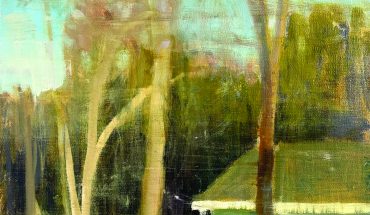
NCMA chief conservator Bill Brown and Duke professor Adele De Cruz, a laser pioneer, have teamed up to restore art with cutting-edge technology.
by Ann Brooke Raynal
photographs by Lissa Gotwals
As with most stories about art, this one begins with the
human eye. In this case, the eye belongs not to an artist but to a leading laser pioneer, whose vision is transforming art restoration.
It started at a conference in London three years ago. Dr. Warren S. Warren, 58, director of Duke University’s Center for Molecular and Biomolecular Imaging, found himself with an extra hour and ducked into the National Gallery, where an exhibit detailed the history and science of art restoration. Warren, who develops new laser technology for medical imaging, immediately recognized that the tools displayed in the exhibit were years out of date. He wondered if the cutting-edge medical laser he was working on could be used in art restoration.
So he called the chief conservator at the North Carolina Museum of Art, William Brown, 56. And he called Dr. Adele De Cruz, 63, an art conservator and adjunct associate professor at Duke, who splits her time evenly between the university and the museum.
Turns out he was on to something. Now the three of them are working together to use the latest in laser technology to restore some of the world’s artistic treasures.
One section at a time
Warren is the inventor of a laser called the pump probe, a noninvasive diagnostic tool that gives scientists a virtual cross-section of layers of chemical components. “Kind of like looking at slice of lasagna,” he says. One could even use the laser to “read” the words on an ancient scroll without actually unrolling the scroll itself, he says.
It’s easy to see how that technology might come in handy to a doctor looking for melanoma or other cancers. In the same way, being able to “see through” the surface of a painting on a molecular level – without actually touching the canvas – is an invaluable service for art conservators.
For example, the laser can distinguish between two different applications of lapis lazuli, or see how and why a certain stroke of cadmium yellow is degrading, all without having to remove paint chips from a priceless work of art.
Then, another laser invented by De Cruz does the work of physical restoration. She calls the Er:YAG, which she patented in 1999, a “light scalpel” because it works like a medical scalpel.
“We identified the wavelength first, which you can use to remove encrusted surfaces. Every wavelength has its own function and its own power. This laser can break the surface without penetrating the substrate,” or base material. While chemical solvents can be damaging to a painting, the laser she designed penetrates only the outermost layer to a depth of three to five microns, and it doesn’t generate heat outside its pulse. In lay terms, the Er:YAG laser is both gentle and accurate.
That’s useful in lots of ways. For instance, Brown notes that artists’ signatures are often very sensitive to solvents. “It’s the last thing the artist puts on, and sometimes he or she puts the signature over a varnish,” making it even more vulnerable. “But Adele, with her skill at the laser, can clean around the signature. It’s that exact. We have developed the precise skills of a surgeon,” explains Brown. De Cruz begs to differ: “We’re even more skilled than surgeons!”
Warren, Brown and De Cruz have been at work on Puccio Capanna’s 14th-century painting, Crucifixion. They chose the painting in part for its composition (the artist uses relatively few colors that make up large swaths of uniform color) and in part for its dimensions (the painting is small, and the pump probe laser is table-sized). Warren hopes technology will catch up to their work, and new versions of the pump probe will be smaller and more portable.
“When I first began this partnership with Duke,” Brown says, “I thought it was all theoretical, ivory-tower stuff, but the point is to get to a machine that works, to get to applied science.”
Getting to applied science increasingly demands collaboration between traditional academic departments, and Warren believes the blurring of old boundaries is the way of the future. “Modern scientists are trained to reach out to people in other disciplines. We need help from people who have thought about a problem from another angle.”
In fact, the Mellon Research Endowment, which funds the NCMA side of the laser research, was given for just that purpose. It’s a collaboration that furthers NCMA director Larry Wheeler’s mission “to share with local universities and create a center for advanced technical studies.”
The point of it all, at the end of the day, is to keep art alive. It’s a point that was brought home by Warren’s own granddaughter, Rylin Kent. A couple of months ago, as Warren tells it, Rylin’s grandmother – possessing a realistic understanding of a 5-year-old’s attention span – slipped into the museum with her for a moment’s visit.
But the little girl called her bluff and wouldn’t let her leave. Captivated by the images on the walls and mesmerized by colors and textures, she wandered down hallway after hallway, enjoying a lasting legacy.




